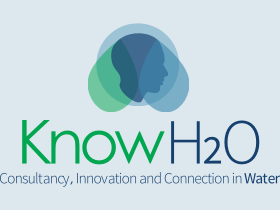Client: Water Authority Vechtstromen/NL
Partners: KWR Watercycle Research Institute
Period: December 2014 – ongoing
Objective: Design, installation, and testing of sub-irrigation and monitoring network on water quantity and water quality issues
Summary
The concept of Climate Adaptive Drainage (CAD) is a controlled drainage system that allows to remotely manage the drainage basis through internet. Technically, the Climate Adaptive Drainage system consists of coupled subsurface drains, of which the drainage basis can be controlled. The equipment installed allows remote and continuous management of the drainage basis, to control the water discharged to the surface water by the outlet of the CAD-system. All is coupled with a telemetry system for control, visualization of information, and data management. If we combine the CAD system with irrigation, we can introduce sub-irrigation.
Agricultural crop yields depend largely on the soil moisture conditions in the root zone. With ongoing climate change, in the Netherlands and elsewhere, more prolonged dry periods alternate with more intensive rainfall events. This will cause changes in present soil moisture dynamics. With unaltered water management practices, reduced crop yield due to drought stress will increase. Therefore, both farmers and water management authorities need to be provided with opportunities to reduce risks of decreasing crop yields.
Available groundwater sources for irrigation purposes are increasingly under pressure. At the same time, treated wastewater from industries and domestic wastewater treatment plants are quickly discharged through (to) the surface water. To balance regional water supply and agricultural water demand, we should move towards a more efficient use of all available freshwater sources. Treated wastewater can potentially be used as a source of freshwater in regions that suffer from droughts. At the Haaksbergen test site, a pilot study is focusing on reuse of domestic treated wastewater through sub-irrigation by drainage systems. This is an irrigation method which with freshwater is delivered to the plant root zone from below the soil surface, moving upward in the soil profile by capillairy rise.
Domestic waste water treatment plants in the Netherlands produce annually a volume of water equal to a 40-50 mm areal water layer of freshwater. A pilot project has been setup in the eastern part of The Netherlands at the Haaksbergen CAD test site, in which treated waste water is applied to a corn field by sub-irrigation during the growing season of 2015, using a climate adaptive drainage system. The chemical composition of treated domestic waste water is different from rainfall excess water and agricultural drainage water. In the pilot project, specific chemicals in the treated waste water are used as a tracer in describing water and solute transport in the soil system. Special focus of this pilot study is on quantifying potential contamination of both the root zone and the deeper groundwater with residual pharmaceuticals.
At our Haaksbergen test site, we have installed a field monitoring network at several locations on the vadose zone and the upper part of the local groundwater system. This enables us to measure vertical solute profiles in the soil water by taking samples, e.g. just next to the subsurface drains and midway between two subsurface drains. Based on field data obtained during the experiments, combined with SWAP (1D) and Hydrus (2D) model simulations (see figure below), flow and transport of the sub-irrigated treated waste water are quantified.




